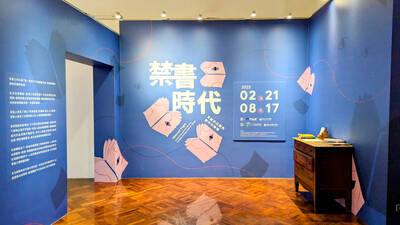The huge ambition of Kamila Shamsie’s fifth novel is announced in the prologue. As an unnamed captive is unshackled and stripped naked in readiness for the anonymity of an orange jumpsuit, he wonders: “How did it come to this?” The vastness of the question as applied to a prisoner in Guantanamo is a challenge to which this epic yet skilfully controlled novel rises in oblique and unexpected ways.
Unfolding in four sections, the novel traces the shared histories of two families, from the final days of World War II in Japan, and India on the brink of partition in 1947, to Pakistan in the early 1980s, New York in the aftermath of Sept. 11 and Afghanistan in the wake of the ensuing US bombing campaign. At its heart is the beautifully drawn Hiroko Tanaka, first seen in Nagasaki in August 1945 as a young schoolteacher turned munitions factory worker whose artist father is branded a traitor for his outbursts against the emperor and kamikaze militarism. She falls in love with a lanky, russet-haired idealist from Berlin, Konrad Weiss, with whom she shares — along with other key characters — a love of languages. But their romance is curtailed by the flash of light that renders Konrad a shadow on stone and burns the birds on Hiroko’s kimono into her back, a fusion of “charred silk, seared flesh.”
Hiroko finds refuge in Old Delhi, in the twilight of the raj, with her dead fiance’s sister Ilse and her English husband James Burton. Hiroko is drawn to Sajjad Ali Ashraf, a dashing Muslim employee who agrees to teach her Urdu. Her hosts discourage their romance, yet the couple grow closer as partition sunders Sajjad from Delhi as shockingly as Nagasaki was lost to Hiroko.
In Karachi, the saga of the Weiss-Burtons and Tanaka-Ashrafs shifts to Hiroko and Sajjad’s son Raza, a linguist given to impersonating Afghan refugees from the Soviet invasion of 1979, and James and Ilse’s son Henry, a Kipling-like figure mourning a lost Indian childhood (his daughter is named Kim). As Harry Burton, Henry has transferred his idealistic allegiance to his adoptive US, becoming a covert CIA operative in cold-war Pakistan. Raza’s naive bid for a kind of gap year in Afghanistan’s training camps with his Afghan friend Abdullah brings adventures with gunrunners and poppy growers, but also sobering loss for the family and enduring guilt for Raza.
After Hiroko decamps to New York, disgusted by nuclear posturing between India and Pakistan, and encounters Abdullah as a taxi driver, the final section alternates between an apartment she shares with Kim, overlooking the smoldering fires of Ground Zero, and Afghanistan, where Harry and his interpreter Raza have joined forces in a private security firm. CIA backing for the mujahideen’s resistance war, and abandonment of them once the Soviet army withdrew, is seen as a grim policy failure whose legacy is being reaped in “Jihadi blowback.” But pivotal to the novel’s final betrayals, guilt and loss is a conversation fraught with suspicion and misunderstanding between Kim and Abdullah.
Through its succession of seemingly disparate, acutely observed worlds, Burnt Shadows reveals the impact of shared histories, hinting at larger tragedies through individual loss. There are minor flaws in plotting, and occasional excesses, but the subtlety lies in repeated patterns of allegiance and estrangement, betrayal and atonement, in the echoes between kamikaze pilots and suicide bombers, or between Ilse’s alacrity in branding Sajjad as a rapist in the novel’s Forsterian vignette and Kim’s suspicion of Muslims after 9/11.
The historical threads between Nagasaki and Guantanamo are implicit, though crucial. In Hiroko’s view, all it takes to wipe people out without scruple is to “put them in a little corner of the big picture” — whatever the “war” in the frame. A similar logic informs a chilling conversation about interrogation techniques. “What wouldn’t I do if I thought it was effective?” Harry muses. “Almost nothing. Children are out of bounds. Rape is out of bounds. But otherwise ... what works, works.” Tellingly, he asks not to be quoted to his daughter.
The identity of the Guantanamo captive remains unclear till the powerful denouement, as events unfold with a malign logic whereby even a man’s stooping for a cricket ball can be fatally misconstrued. Any reader anticipating a predictable yarn about the radicalization of Islamist youth may feel cheated. Far more, I suspect, will feel challenged and enlightened, possibly provoked, and undoubtedly enriched.

There is a Chinese Communist Party (CCP) plot to put millions at the mercy of the CCP using just released AI technology. This isn’t being overly dramatic. The speed at which AI is improving is exponential as AI improves itself, and we are unprepared for this because we have never experienced anything like this before. For example, a few months ago music videos made on home computers began appearing with AI-generated people and scenes in them that were pretty impressive, but the people would sprout extra arms and fingers, food would inexplicably fly off plates into mouths and text on

On the final approach to Lanshan Workstation (嵐山工作站), logging trains crossed one last gully over a dramatic double bridge, taking the left line to enter the locomotive shed or the right line to continue straight through, heading deeper into the Central Mountains. Today, hikers have to scramble down a steep slope into this gully and pass underneath the rails, still hanging eerily in the air even after the bridge’s supports collapsed long ago. It is the final — but not the most dangerous — challenge of a tough two-day hike in. Back when logging was still underway, it was a quick,

From censoring “poisonous books” to banning “poisonous languages,” the Chinese Nationalist Party (KMT) tried hard to stamp out anything that might conflict with its agenda during its almost 40 years of martial law. To mark 228 Peace Memorial Day, which commemorates the anti-government uprising in 1947, which was violently suppressed, I visited two exhibitions detailing censorship in Taiwan: “Silenced Pages” (禁書時代) at the National 228 Memorial Museum and “Mandarin Monopoly?!” (請說國語) at the National Human Rights Museum. In both cases, the authorities framed their targets as “evils that would threaten social mores, national stability and their anti-communist cause, justifying their actions

In the run-up to World War II, Admiral Wilhelm Canaris, head of Abwehr, Nazi Germany’s military intelligence service, began to fear that Hitler would launch a war Germany could not win. Deeply disappointed by the sell-out of the Munich Agreement in 1938, Canaris conducted several clandestine operations that were aimed at getting the UK to wake up, invest in defense and actively support the nations Hitler planned to invade. For example, the “Dutch war scare” of January 1939 saw fake intelligence leaked to the British that suggested that Germany was planning to invade the Netherlands in February and acquire airfields